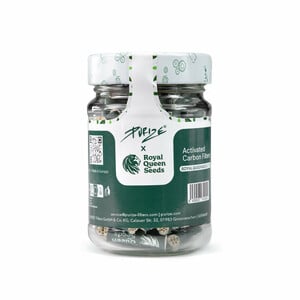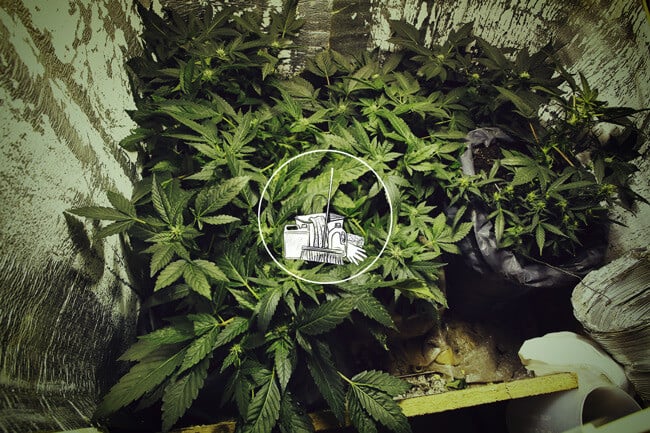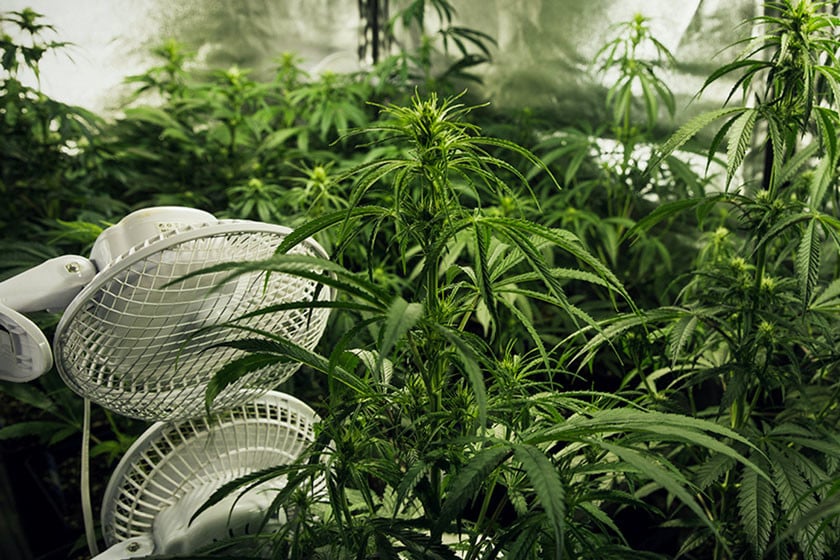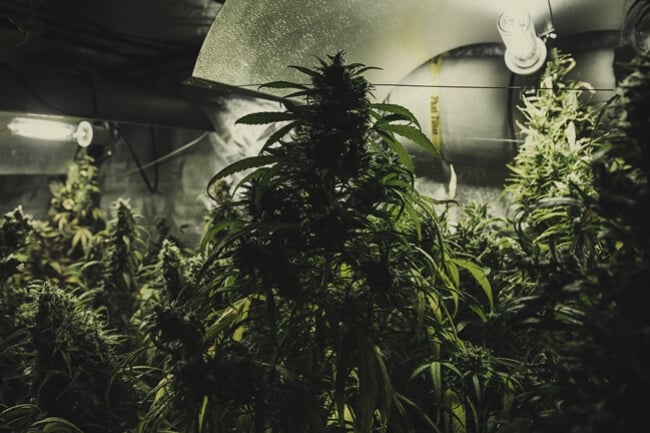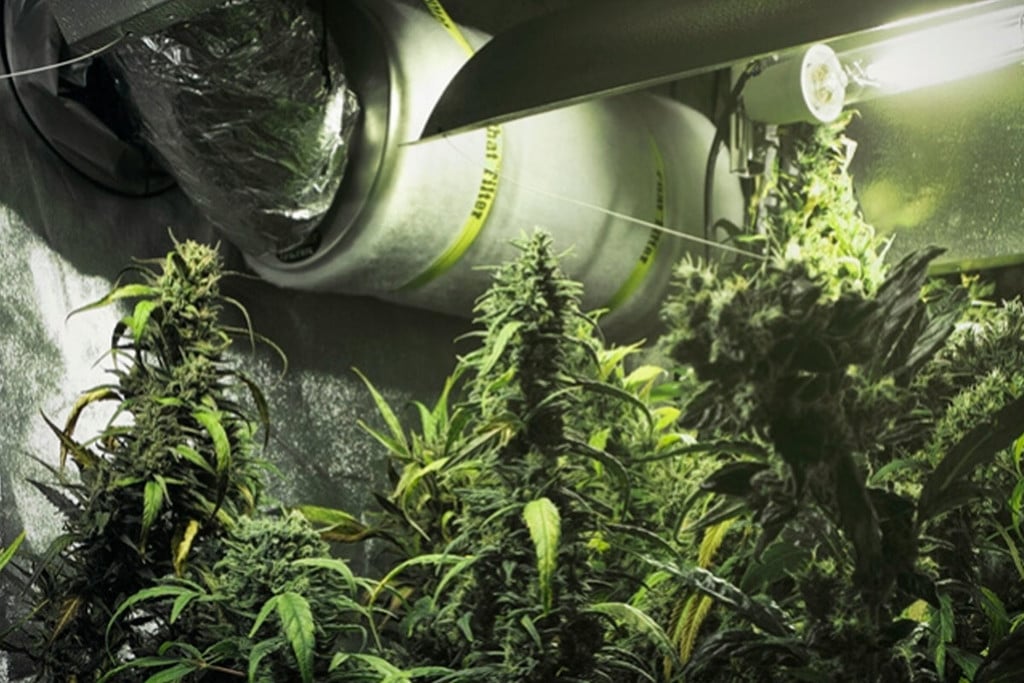.
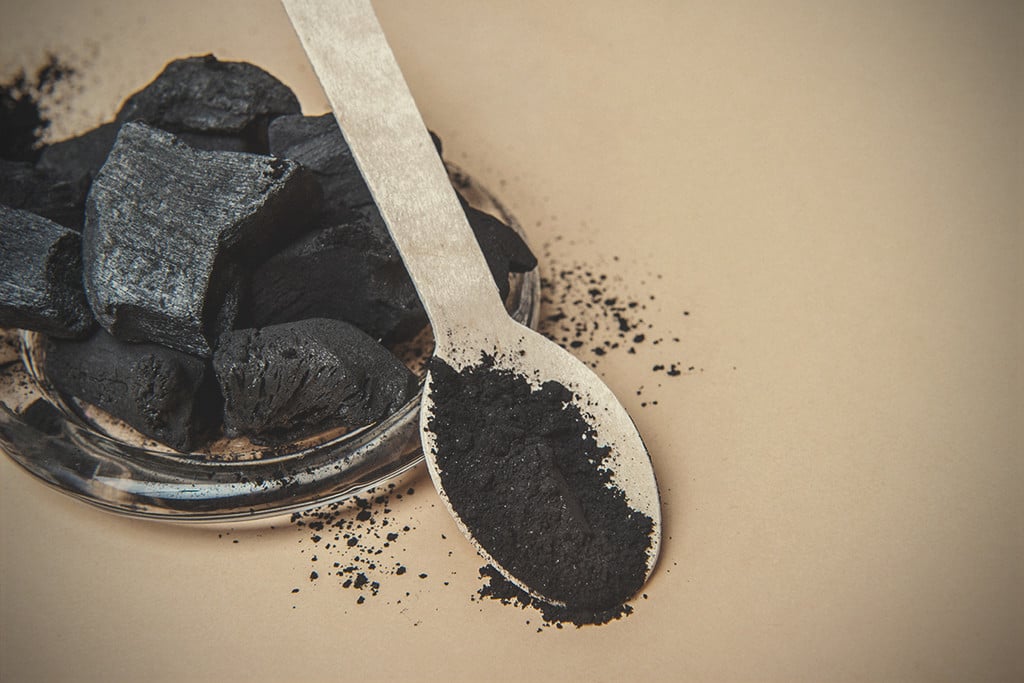
Benefits of Activated Charcoal for Weed Growers and Smokers
Activated charcoal is a very fine, black, odourless powder. The way it is manufactured gives it exceptional toxin-adsorbing properties with a wide range of practical uses, including for the cannabis connoisseur. Whether you're a weed grower, smoker, or both, you can use activated charcoal to eliminate unwanted emissions for a better experience.
Contents:
- What is activated charcoal?
- How is activated charcoal created?
- How is activated charcoal used?
- How do activated charcoal filters work?
- How is activated charcoal useful to cannabis growers?
- How to maintain a carbon filter
- Activated charcoal smoking filters
- Activated charcoal: for cannabis growers and smokers
Experienced cannabis growers and smokers will be familiar with activated charcoal, as the substance finds use both in the grow room and on the tip of a joint. Read along for everything you need to know about activated charcoal.
What Is Activated Charcoal?
Activated charcoal is not the same substance that comprises charcoal bricks. The way activated charcoal is manufactured makes it super porous, and thus highly adsorbent. This allows it to bind to molecules, ions, and atoms, removing them from dissolved substances. You may also hear activated charcoal referred to as activated carbon.
A fine, odourless black powder, activated carbon has toxin-adsorbing properties that are utilised for domestic, industrial, and medical purposes. This includes filtering water to catch pollutants, and air to remove strong odours, hence its usefulness to cannabis growers. Activated carbon also has potential therapeutic and cosmetic benefits, although not all have been scientifically proven.
How Is Activated Charcoal Created?
Materials rich in carbon, such as wood, peat, coconut shells, or sawdust, are heated to very high temperatures. This intense heat "activates" the charcoal, stripping it of any previously absorbed molecules and freeing up binding sites. The materials are placed in a tank without oxygen and subjected to 600–900°C temperatures. The carbon is exposed to different chemicals, including argon and nitrogen, and then heated again at between 600 and 1200°C while being exposed to steam and oxygen. A pore structure is created from this process, and the overall surface area is massively increased.
Incredibly, a single teaspoon of activated carbon has roughly the same surface area as a football pitch.
How Is Activated Charcoal Used?
As briefly mentioned, activated charcoal is used throughout numerous industries and for various purposes in the home. Below we highlight some of the most common or notable.
Treatment of Poisons and Overdose
The World Health Organisation has approved the use of activated charcoal for emergency treatment of poisonings or overdoses. Activated charcoal can help to clear toxins and drugs from the body. This includes NSAIDs and other OTC anti-inflammatories, sedatives, and mild stimulants such as methylxanthines. However, activated charcoal cannot bind to all classes of toxins or drugs, especially corrosive ones.
Suppose the overdose or poison has been ingested within 1–4 hours prior to diagnosis. In that case, the patient may be given a drink of powdered activated charcoal and water. Activated charcoal mixtures can also be administered via feeding tubes in the nose or mouth. By binding to the toxins, the activated powder stops them from being absorbed in the body. As the stomach cannot absorb charcoal, the toxins that attach to the charcoal leave the body via the faeces.
Other Health Complaints
Due to its effective toxin-clearing properties, advocates of activated charcoal propose it as a treatment for many conditions. Many of the over-the-counter products containing activated charcoal rely simply on the material's fundamental chemical principles as evidence. Indeed, there is some evidence to support the use of activated charcoal for the following purposes or issues:
| Kidney health | Intestinal gas | Diarrhoea | Teeth Whitening |
| Skin Care | Deodorant | Skin Infection |
| Kidney health | Intestinal gas | ||||||
| Diarrhoea | Teeth Whitening | ||||||
| Skin Care | Deodorant | ||||||
| Skin Infection | |||||||
|---|---|---|---|---|---|---|---|
Filtering of Air and Water
Activated charcoal cleanses unwanted organic chemicals from liquid and vapor by attracting and holding onto them. VOCs (volatile organic compounds), including benzene, toluene, xylene, oils, and some chlorinated compounds, are the most common chemicals removed through activated charcoal filtration. It is a cost-effective way to remove contamination from large volumes of air or water; however, the efficiency can vary, as many variables affect carbon's capacity to bind to toxins. These include:
| Molecular weight | Polarity | Solubility in water |
| Temperature of the fluid stream | Concentration in the stream |
| Molecular weight | Polarity | ||||||
| Solubility in water | Temperature of the fluid stream | ||||||
| Concentration in the stream | |||||||
|---|---|---|---|---|---|---|---|
How Do Activated Charcoal Filters Work?
Suppose you know anything about growing cannabis indoors. In that case, you will undoubtedly be familiar with activated carbon filters. Carbon filters are a staple of most grow rooms. They keep telltale odours from seeping out of the growing environment and into the nostrils of your nosey neighbours. How exactly do they work, though?
What Is Adsorption?
As mentioned, activated carbon filters use "ad"-sorption, not "ab"-sorption, to remove pollutants from air or water. This chemical reaction causes pollutants to get trapped inside the pore structure of the activated charcoal. The difference between the two is that, with adsorption, contaminants stick to the outside of the carbon substrate. In contrast, with absorption, pollutants are held inside the structure.
You can determine if a material is absorbent or adsorbent by observing if there’s any change in volume. For example, a sponge expands when it has "absorbed" water, whereas there is no visual change with adsorption, as the molecules have merely attached themselves to the surface.
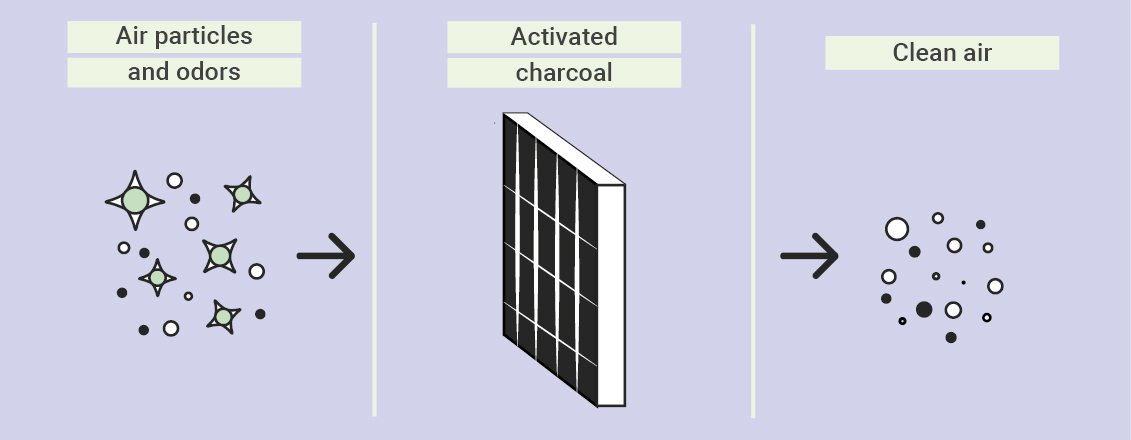
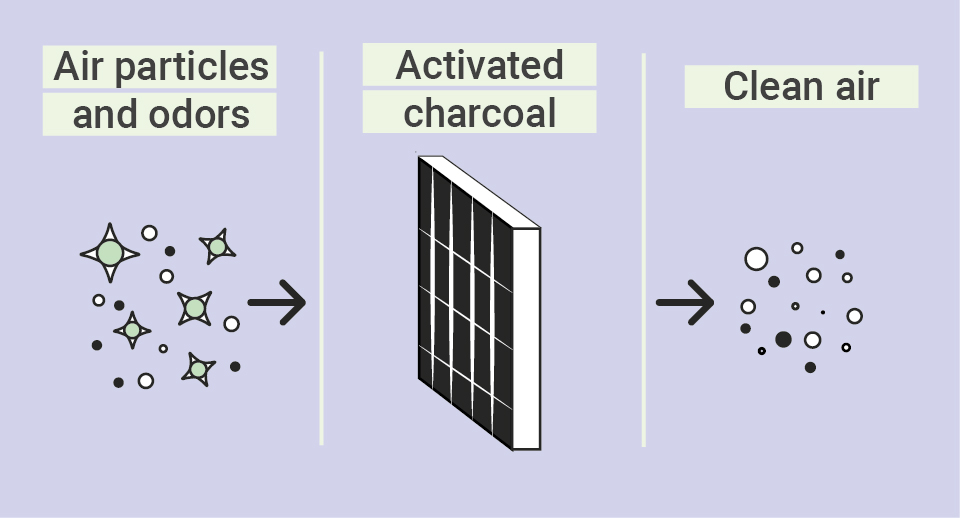
How Is Activated Charcoal Useful to Cannabis Growers?
Carbon filters containing activated charcoal are the best option to remove grow room smells and emissions, such as cannabis terpenes, that may otherwise attract unwanted attention or insect pests. These filters are also the best way to ensure your plants receive a constant supply of the freshest air possible when growing.
There are short-term solutions like air purifiers, neutralising sprays, gels, and powders that mask smells. However, these measures will not remove the odour from your grow room altogether, nor will they eradicate any dust or other particles. Sprays and gels are also so strongly scented that they can taint your plants' natural terpenes and flavour.
In a grow tent, the carbon filter is typically attached to the inline duct fan or ducting, and the air circulating through the tent is pulled through the filter. All of the odour molecules, spores, allergens, and other contaminants present are adsorbed by the carbon. The freshly “scrubbed” air is then expelled from the tent through the exhaust fan with no telltale signs of odour or emissions.
How to Maintain a Carbon Filter
Carbon filters are available in various sizes, catering to the size of your grow room and the amount of filtration you're looking for. Maintain your carbon filter by cleaning it once a month. This is easy; just remove the filter from your grow room and shake out any trapped dust and debris. When the pore structure of the carbon material is full, your filter will no longer be able to trap new molecules. Carbon air filters should be changed every one to one-and-a-half years, depending on how hard you work them.
Activated Charcoal Smoking Filters
The usefulness of carbon filters does not stop at growing cannabis. Activated charcoal filters are popular in cigarettes, joints, and spliffs as a great way to adsorb any gas-phase toxins present in the plant material, such as hydrogen cyanide, ammonia, and crotonaldehyde. If you are worried about the filter removing precious cannabinoids from the smoke, don't be. The activated charcoal only adsorbs harmful compounds in the smoke, bigger in size than THC and other cannabinoids.
Carbon cigarette filters look like regular filters, except they have tiny activated carbon pieces embedded in them. Research has found that while there is no proof that these filters will reduce the risk of severe respiratory illnesses, they may contribute to lessening the dangerous effects of smoking by filtering out tar. They are also reported to improve the taste of cigarettes[1] and joints, increasing smoking pleasure.
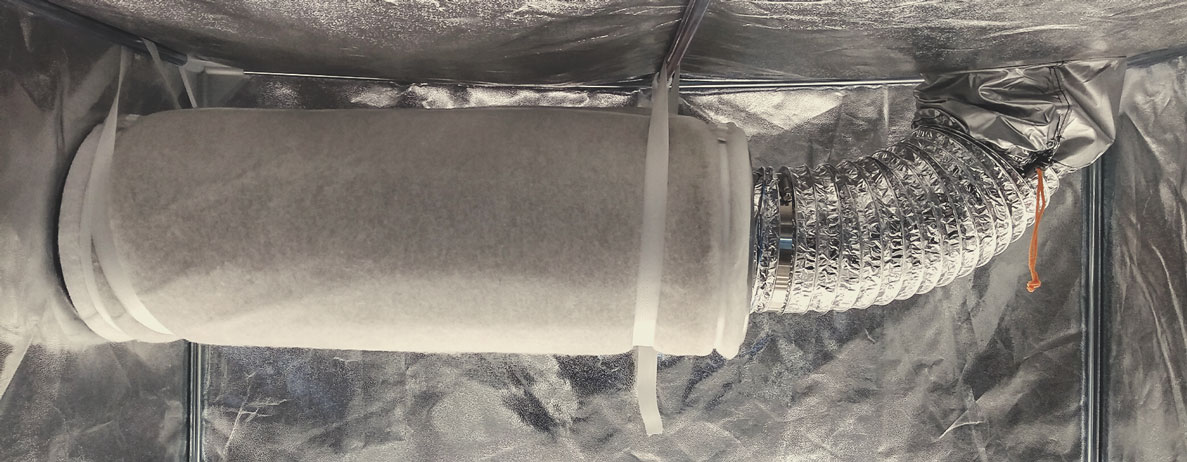
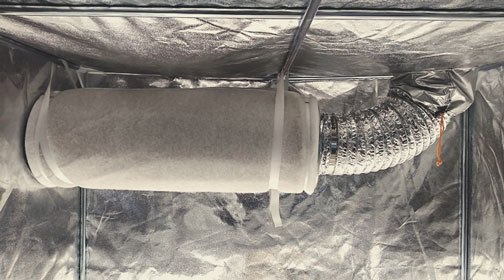
Activated Charcoal: For Cannabis Growers and Smokers
As well as being unpleasant for the senses, odours and emissions can affect how habitable your home is. At best, they can be uncomfortable, and at worst, they can be dangerous to your health. Keep your grow room contaminant-free and stop any suspicious smells from escaping by using a filter containing activated charcoal.
Likewise, if you worry about how smoking could be impacting your respiratory health, or you’re just not sure what might have been used to grow your current stash, then using a carbon filter for your joints might not be a bad idea.
- Effect of Charcoal in Cigarette Filters on Free Radicals in Mainstream Smoke https://pubs.acs.org


























